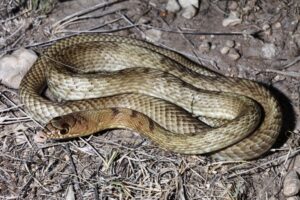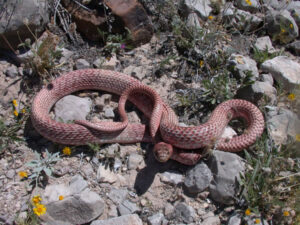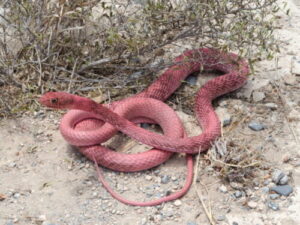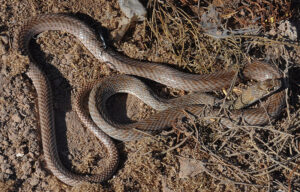Western Coachwhip (Masticophis flagellum testaceus)
Updated on
25/04/2024The western coachwhip is a subspecies of the coachwhip or whip snake. The long and thin snake moves very fast. The variable-colored colubrid is common across most of Texas, the southwestern United States, and much of Mexico.
Scientific Classifications
- Suborder:Serpentes
- Family:Colubridae
- Genus:Masticophis
- Species:M. flagellum
- Subspecies:M. f. testaceus
Conservation Status
Description
Size
The adults reach a total length of 4-6 ft (122-183 cm), including the tail. Their weight is in the range of 6.5-24 oz (184-680.4 g).
Color and Appearance
The long, slender body of the western coachwhip is light tan to brown with a gradual change of color towards the tail. Some specimens can be of uniform pink color (in desert regions), and some can be olive as well. They can have slightly darker bands. The head is wider than the long, slender neck, and the tail is thin. The serpent has smooth scales and large eyes with round pupils.
Are They Dangerous to Humans
Upon confrontation, the nervous snake tries to flee. When it is cornered or feels threatened, it vibrates its tail and strikes repeatedly. Though the colubrid is non-venomous, it has sharp teeth that can certainly cause a painful bite.
Western Coachwhips at a Glance
Distribution
Its range extends as far north as Nebraska in the US and as far south as Mexico City in Mexico. Westward, it extends till New Mexico, US and eastward up to Oklahoma, US.
Habitat
The western coachwhip lives in open habitats like scrublands, dunes, and fields. They hide in shrubbery or ground litter. Though they don’t need to be near water, they do know how to swim.
Lifespan
It lives for up to 13 years.
Predators
Hawks are the major predators of the western coachwhip.
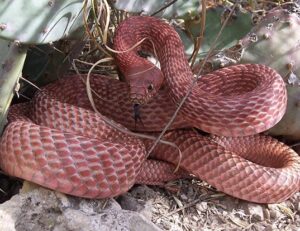
Diet
They mostly eat small snakes, lizards, birds, and mice.
Reproduction
Oviparous (lays eggs that hatch outside the body)
They lay eggs in early summer that hatch in 45-70 days.
Source
inaturalist.org, srelherp.uga.edu, peecnature.org, flickr.com, worldlifeexpectancy.com

